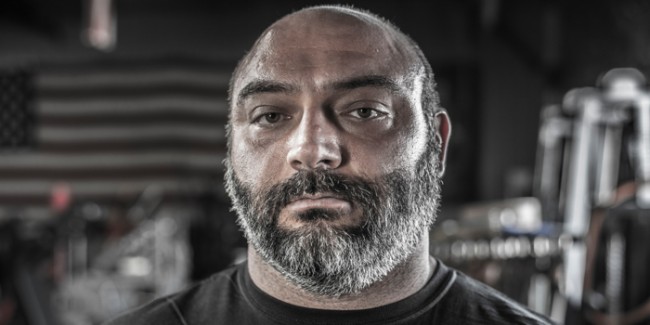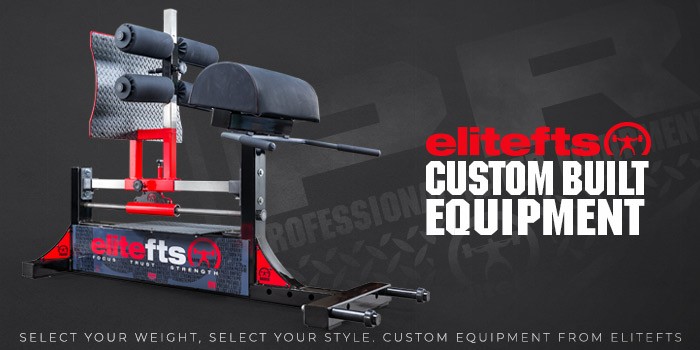
One of the most common questions I get is “How do I run a conjugate model while my athletes are in season?” The great thing about this system is that it is very flexible, and you can mold it to what your athletes need the most. I have personally run all of the examples we will go over with great success. The feedback I received from athletes with all these options is that they felt good in-season and didn't feel beat up, and our postseason testing results showed that we can get stronger or keep 90% of the group at or above 90% of their preseason maxes. In some of these examples, we will do very little max-effort or heavy work.
RECENT: Programming Sport Specific Conjugate
The “I Don’t Want My Athletes Doing Anything Heavy In-Season” Method
As much as most strength coaches, including myself, will cringe when we hear this, it is a reality of your profession. There were different situations when we were forced to do this. Sometimes it was a sport coach dictating in-season training, and other times, it was what the athletes needed most. With this method, you are basically going to do dynamic effort work and repeated effort work. Now, before you get your cut-off polo sleeve shirt and gray sweats in a tizzy, take a deep breath... this method actually works quite well if your athletes have a good grasp on how to train. As much as I like to go heavy in-season when possible, you have to take a step back and realize that your athletes are very untrained in the weight room, so if you can get them to push on a submaximal load as hard and as fast as they can and put some decent effort into the accessory work, they will be able to keep or even make strength gains during the season using this. There are a couple of examples when I had to go to this model when I was coaching. Every time we had to use this, the athletes felt fresh and ready to compete, and our postseason testing numbers showed that we were able to keep at least 90% of the athletes at 90% or better of their preseason maxes and vertical jumps.
Day 1
DYNAMIC EFFORT LOWER
- Tissue prep
- Warm-up
- Jumps
- Dynamic effort movements
- Accessory movements
- Mobility/reset
Day 2
DYNAMIC EFFORT UPPER
- Tissue prep
- Warm-up
- Throws
- Dynamic-effort movements
- Accessory movements
- Mobility/reset
Don’t let the simplicity of this setup fool you. This can be very effective and efficient for in-season training. It's up to you to set these days up specifically to your population’s needs.
The “You Have to Train Heavy to Get Strong” Method
Although I agree with us in general, I have to throw the caveat in of “it depends.” Most of the time, this statement holds true, but when we start working in-season, we have to deal with schedules, group readiness, and a multitude of other factors. When all of these things allow us, this would probably be my go-to method. Keep in mind in the template below when you see the max effort method that this is a very flexible lane. Some groups will be totally fine with doing true max-effort work, whereas others may need to modify. For example, our throwers were fine doing true max-effort work in-season. On the other hand, you may be dealing with a football player who basically goes out and puts himself through a car wreck multiple times a week. In the case of a football player, it might be better to use an RPE-type system for your max effort work or even work off of some heavier percentages. I never liked percentages personally because there's too much variance within the season and the athlete's strength levels. If the percentages are what works for you, then you can easily plug that into the max-effort lane in-season. One of the main justifications for this method could also be that the athletes spend plenty of time in-season on speed work, so you don’t need to work on it specifically in the weight room. There were many times in-season that I would take the jumps and throws out for this very reason. Keep in mind that this is for your athletes and your individual situation. There are many variations that will work.
Day 1
MAX EFFORT LOWER
- Tissue prep
- Warm-up
- Jumps
- Max effort movements
- Accessory movements
- Mobility/ reset
Day 2
MAX EFFORT UPPER
- Tissue prep
- Warm-up
- Throws
- Max effort movements
- Accessory movements
- Mobility/ reset
The “No Stone Unturned” Method
This is for the truest of the true conjugaters! Max-effort method, dynamic-effort method, repetition method, or die! This option will allow you to train all three methods in-season and not over-train your athletes. This layout is very simple and time-effective. We basically would cut the dynamic work volume in half and then hit a couple of work-up sets after your speed work.
Day 1
MAX EFFORT LOWER
- Tissue prep
- Warm-up
- Jumps
- Dynamic-effort sets followed by heavy sets: 4x2 @ 40-65% (depending what your goals are): Work up to a couple of heavy doubles at a certain RPE or use higher percents
- Accessory movements
- Mobility/reset
Day 2
- Tissue prep
- Warm-up
- Throws
- Dynamic-effort sets followed by heavy sets: 4x2 @ 40-65% (depending what your goals are): Work up to a couple of heavy doubles at a certain RPE or use higher percents
- Accessory movements
- Mobility/reset
The “Weekly Alternating” Method
This is simply a combination of the “I Don’t Want My Athletes Doing Anything Heavy InSeason” and the “You Have to Train Heavy to Get Strong” methods. All you do is alternate “heavy” and “speed” weeks.
With any of these methods, I always found it beneficial to run a mini “peaking phase” going into our most important time of the year. For example, if we were four weeks out from the tournament, we would drop some bar percentages and increase band tensions to increase bar speed and guide the training toward our athletic goals. This is detailed week by week in my Coaches blog under the “Men’s Basketball 7,6,5,4,3,2,1 weeks out” posts.











https://www.elitefts.com/education/16-week-conjugate-periodization-program-for-novice-powerlifters/
Scroll to the bottom of page for the workout or enjoy reading everything and go from there.